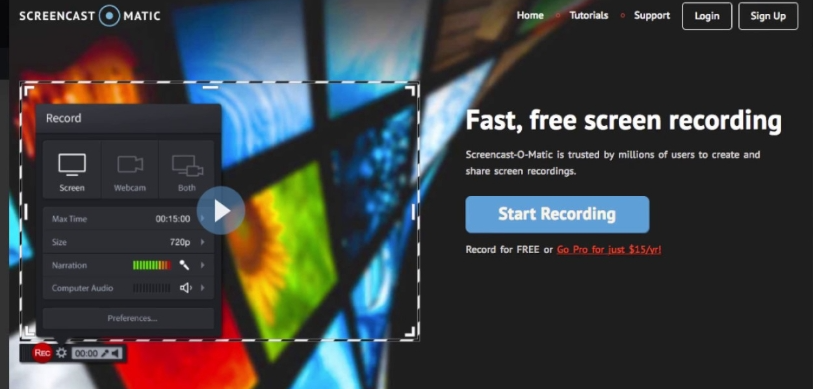Mistakes to avoid before you start working.
You have your new TEFL or TESOL certificate and you are busy applying for new teaching positions. Everything is great and you are fired up to take the first job offered. Slow down and look closely at what you are doing.
Time and again I see new teachers coming into the market all starry eyed, only to be taken advantage of.
The Most Common Mistakes Made by New Foreign Teachers:
Failing to consider out-of-classroom work and, as a result, making mistakes like accepting lower hourly rates or agreeing to frequent extracurricular activities that stretch beyond the contract.
Not inquiring about the employer’s expectations before starting work, as well as the employer’s history.
A failure to fully read the contract. Just because an employer says something is fine and dandy does not make it always so. Look out for penalty clauses in your contract. Will you be docked 1 hour pay if you are 5 minutes late?.
In places like HCMC in Vietnam the traffic will mean you will be late at some time.
Failure to prepare backup classes or materials in the event that something goes wrong on the employer’s end (lost books, equipment failure, missing lesson plans). Always make sure you have a back up lesson in place.
Soon a new group of teachers will be starting soon, so stay tuned for additional information.

Mistakes to avoid in the classroom.
Being the too fun teacher.
Yes, teaching English should be enjoyable, but there will be no learning if you lose control of your students and they do not regard you as a trustworthy educator.
Setting your rules from the beginning will allow you to have more fun with your pupils later on. Introduce a set of norms and stick to them, as well as the penalties that come with them.
Once you’ve done that, your students will behave better, allowing you to have more fun along the way.
Using the Same Lesson Plan for All Levels
This is a common mistake made by rookie teachers who believe they can teach all levels of pupils in the same way. Begin a new course by taking a grade test to determine the students’ proficiency level, and then schedule your lessons accordingly.
This does not imply that you must plan each and every lesson from scratch. A lesson plan can be tweaked and activities swapped out to make it appropriate for each level. Also don’t improvise, you do need a lesson plan, however basic it may be.
Don’t follow the textbook to a tee
EFL textbooks aren’t known for being page-turners. Add new exercises to your textbooks, skip the ones that aren’t working, and alter the ones that aren’t working.
Just keep in mind not to fully disregard the textbook. It is likely that the students paid for it out-of-pocket, that it provides structure to the lesson, and that understanding of its contents may be useful to your pupils in future classes.
Speaking too quickly or slowly.
When you speak too quickly or too slowly, it can be difficult for foreign students to understand what you’re saying.
When teaching English to speakers of different languages, as you learnt throughout your TEFL certification course, you must be extremely careful with your voice.
When a teacher is really engaged in a session, they frequently speak in their natural voice, which can be difficult for pupils to understand, particularly those with a low level of English. Simultaneously, do not speak too slowly when educating advanced students; otherwise, they will become bored and you will lose their attention.
Over correcting.
During your TEFL certification course, you’ll have learnt a lot about correcting errors in the EFL classroom, so keep these guidelines in mind when you’re in the classroom teaching a lesson. Some teachers insist on correcting every single grammatical or pronunciation error that a pupil makes.
While it is important to rectify errors in written work, it is not necessary to be as stringent in conversational English. If you constantly correct your students they will become too scared to talk in the classroom. Accuracy is less crucial than fluency.
Teaching each student the same way.
You shouldn’t teach every single kid the same manner, just as you shouldn’t utilize the same lesson plan for all of your students. With practice, you will be able to identify the strengths and shortcomings of each and every student you teach
Some children require more assistance with writing, while others require more assistance with reading. After a few lessons, you’ll have a better understanding of your students and be able to adjust your teaching method to meet their needs.
At the same time, you can assign different homework exercises to different children and educate their parents about what needs to be changed.
Remember we all learn in different ways.
Blaming the students if they don’t understand.
If your students don’t understand something, it’s almost often because you didn’t provide the information in a way that they could comprehend. It is your obligation as a teacher to explain, show, and model things until your students understand them.
Only time will allow you to gain a thorough understanding of your students’ learning methods and preferences, and this knowledge will aid you in presenting new concepts swiftly and easily.
Talking too much.
This is one of the most common blunders made by rookie ESL teachers. Simply said, learning to talk necessitates your kids speaking.
Your kids aren’t talking if you’re talking about what you did last weekend. Encourage your pupils to start conversations instead.
Let your students to go over the answers to an exercise if you need to. It will take time and work to make your classes more student-centered rather than teacher-centered. However, recognizing the issue is the first step.
Pretending you know everything.
Your English, like that of your students, has limitations. Sooner or later, one of your students will ask you a question that you will be unable to answer. It’s not something you made up.
Instead, admit that your understanding is limited and assure the student that you will get back to them. And make sure you do. Failing on a promise will lower your skills and teaching ability in the eyes of the students.
Not using technology in the classroom.
There are a lot of tools and resources available to make the learning experience more exciting for your students. Don’t forget to spice up your lessons. You can find out more about some tech tools for the classroom ==> HERE <==
Not having any fun in the classroom.
Create a stimulating learning environment by incorporating interesting fun activities into your class planning. This will not only assist your students in learning English quickly, but it will also be enjoyable for you as the teacher.
Teaching English is a rewarding and enjoyable job with numerous benefits. It’s fine to crack a joke now and again and play games in the classroom if they’re relevant to English learning, of course. A good teacher is one who is happy and fun.
Not updating your skills
All too often I see teachers who become complacent and think they know it all. It is the great teacher who continues to learn and improve his classroom skills. A great company who provides additional learning is ==> UDEMY <==
Conclusion.
Hopefully, these pointers will make your EFL teaching adventure a little less difficult. Learn more about how to get started on this type of journey by clicking here.
Who am I.

my name is Stephen and I have been teaching EFL in Vietnam for 15 years and own 2 schools. I love traveling and experiencing different cultures. I hope you join me in discovering the world.
Any or all links on this site maybe affiliate links, and if you purchase something through those links I will make a small commission on them.
There will be no extra cost to you and at times due to my affiliation you could actually save money.
You can read our full affiliate disclosure here.



































